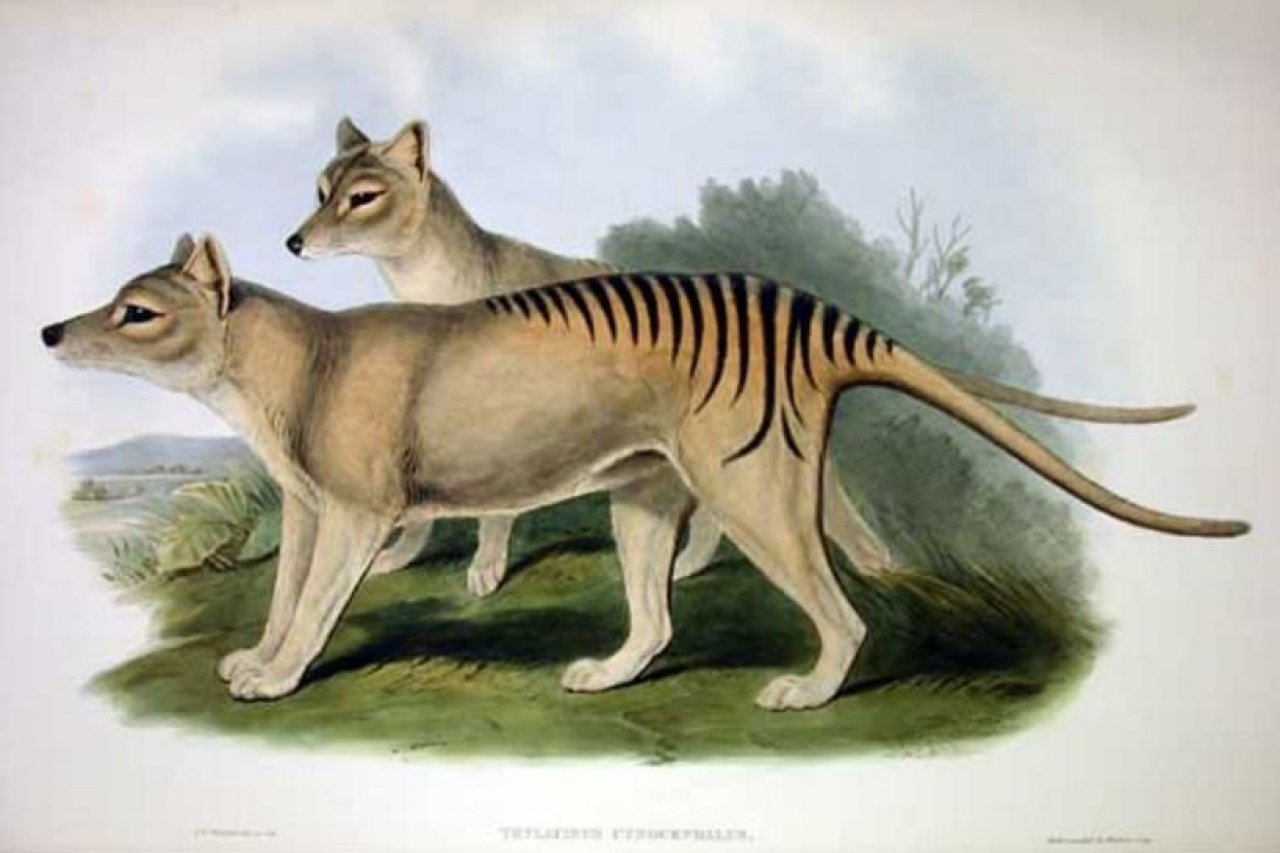For the first time, scientists have peered into the brain of a long-extinct animal: the Tasmanian tiger, a rangy and fierce carnivore that ruled the wilds of its namesake island and was hunted into oblivion in 1937. A marsupial—like kangaroos or opossums—the apex predator wasn't related to tigers and resembled a dog or coyote.
Emory University neuroscientists Gregory Berns, who, among other things was the first to train a dog to enter an MRI machine, recently came across photos of Tasmanian tigers. Noting their canine look, he wondered whether their brains might be similar to those of dogs. What if, he wondered, you could scan the Tasmanian tigers' brains?
Berns reached out to Ken Ashwell, a neuroanatomist with the University of New South Wales. Together they hunted down a Tasmanian tiger brain that had been soaking in preservative at the Smithsonian Institution for well over a century. (There are three more of these brains scattered around the world, but this was the best-preserved specimen they could find. They also got their hands on a second brain that was partially damaged but still yielded important data.)
The duo scanned the brains in an MRI machine. Surprisingly, though the brains had shrunk to one-third their original size, the structure within was well-preserved. The scans give the scientists many clues about the animal's biology and behavior, as described in a study published January 18 in the journal PLOS ONE.
As to Berns's initial question, the brains of the Tasmanian tiger (Thylacinus cynocephalus) and dogs look very different. For one thing, the extinct predator has larger olfactory bulbs, the neural machinery responsible for the sense of smell. This suggests that smell was very important for the tigers, allowing them to hunt in the varied geography of Tasmania, which includes forests and thick grasses that can obscure vision.
The researchers also compared the Tasmanian tiger's brain to that of the Tasmanian devil—the tiger's closest living relative—an endangered predator and scavenger which mostly eats carrion. That analysis showed the tiger's brain to be larger, which would fit descriptions of the animal as an ambush predator requiring relatively more intelligence than scavenging. The tiger's brain is also compartmentalized, or modular, which typically happens as brains get larger. Not all the neurons have enough room to communicate, so the brain develops areas specialized for different functions.

Leah Krubitzer, a researcher at University of California, Davis, who wasn't involved in the research, says that this "heroic" study helps to expand scientists' knowledge of brain evolution and variation. That's vital since most of our data about brains come from a tiny subset of animals such as mice, rats, macaque monkeys, ferrets and, of course, humans.
Berns has now initiated a project called Brain Ark to scan the brains of as many animals as possible. So far, he and his colleagues have scanned dolphins, elephant seals and a manatee, and have assembled "a growing collection of coyote brains."
"We're trying to get the word out" to researchers, Berns says. "Send us your brains."




















